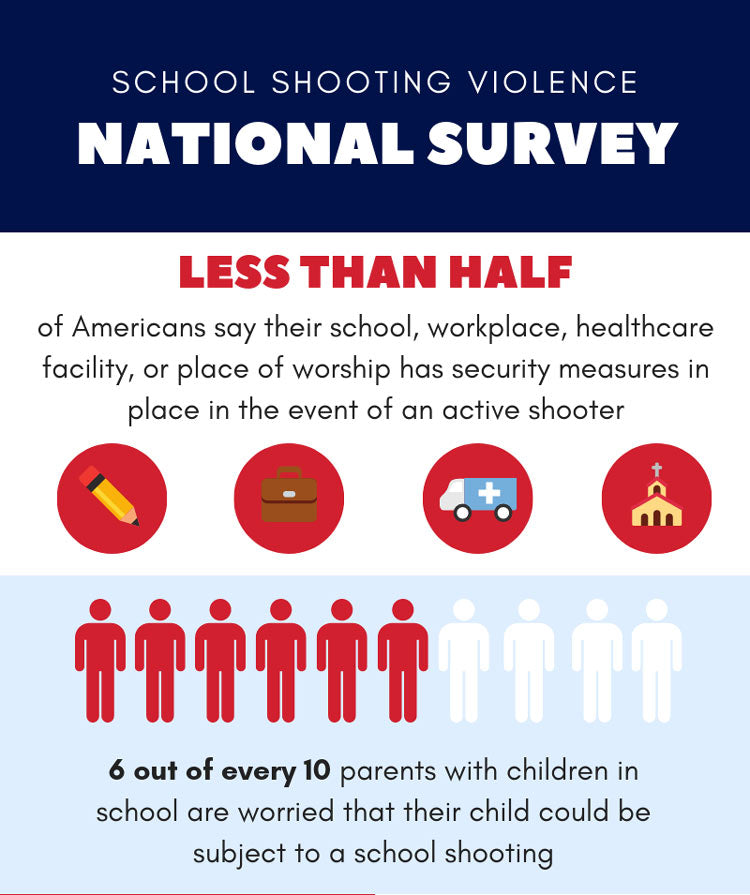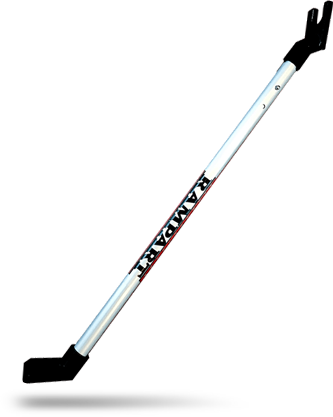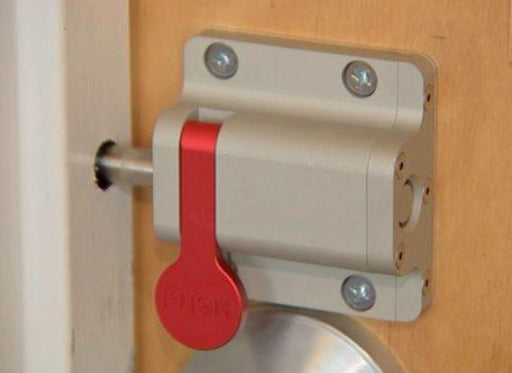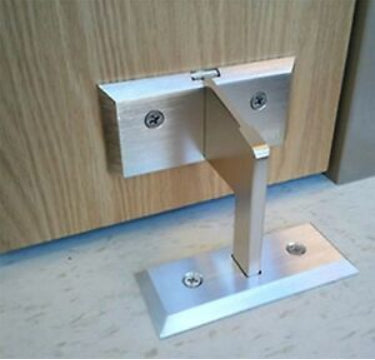9 Door Security Device Types To Use In Lockdowns
Find out the best door security device for effective lockdowns
Nowadays, keeping yourself and your family safe means preparing for any emergency. Aside from preparing for natural disasters, you must now prepare for other violence-related emergencies.

Photo: Quick Look: 277 Active Shooter Incidents in the United States From 2000 to 2018 | FBI: Office of Partner Engagement
Since 2000, mass shooting incidents have gone up. In October 2020, there have already been 518 cases. That’s 101 more than in 2019 - and the year isn’t even over yet!
This has already taken over 400 lives, which is a big increase from last year's statistics.
Furthermore, in 2018, there were 213 casualties from active shooter incidents. About 85 people were killed, and 128 were wounded.
Venues, where active shooter events happen, varies. Some shooter incidents occurred in public spaces such as schools and malls; others happen within private homes or offices.
How do you protect yourself?
When a threat happens, you can have a fight, flight, or freeze response. Panic can cause you to feel paralyzed or numb, which exposes you to immediate danger.

To counter the freeze response, you need to develop automatic responses to help fight the freeze response. This is how ALICE Training can save lives. In schools and workplaces, active shooter drills are now required to ensure safety.
One of the essential actions in an active shooter emergency is going on lockdown.
According to HealthAffairs.org, although prevention of such incidents is the ideal solution, adapting and preparing for it is also needed. Compared to a fire drill, active shooter drills practice participants’ responses in going on lockdowns until police arrive and evacuate everyone.
How can you ensure effective lockdowns?
Research shows that active shooting events do not last more than 19 minutes. But, within the first 10 minutes, the shooter can already do a lot of damage.
When going on lockdown, actions must be quick and quiet. Lockdowns must be done within a few seconds to give more time in hiding and to avoid attracting the shooter’s attention.
Door locks are not enough security to keep the shooter out. Shooters can shoot through locks or exert external force to break open a door. An essential step in keeping an intruder out is by effectively barricading the door.
Door locks are not enough to keep the shooter out. Shooters can shoot through locks or exert external force to break open a door. An essential step in keeping an intruder out is by effectively barricading the door.

Door locks are NOT enough to keep intruders and active shooters out. Nowadays, you need a door security device to protect yourself and others. Get The Sleeve² for outward-swinging doors and Rampart for inward-swinging doors. Both are effective and easy-to-use in emergencies. Be prepared for any active shooting events or intruder break-ins.
According to a School Shooting Survey, 65% of Americans believe that each classroom should be equipped with door security devices.


What You Should Look for in a Door Security Device
The good news is that there are many door security devices in the market. No shortage of different security devices can fit different types of doors. However, not all are recommended for lockdowns, especially in public venues.
An effective door security device for active shooter incidents should meet the following security requirements:
- Does not violate building or fire codes
- Can be installed or activated within seconds
- Easy-to-use with its intuitive design
- Does not break or fail when force is applied
- Can be installed without causing noise
Although the main goal of going on lockdowns is to keep the intruder away, locking doors or stacking large equipment against the door is not appropriate for the situation.
-
Security Requirement #1: Does not violate building or fire codes
Public doors need to comply with the National Fire Protection Association (NFPA) codes.
All doors must be outward-swinging and unlocked. In case of any danger, occupants in a room can quickly leave it by pushing the doors. During fire or bomb threats, outward-swinging doors lessen chances of occupants to be locked in.
For private homes and offices, it’s common to have inward-swinging doors. It offers better security to private homes because the hinge pins are inside. It won’t be accessible for outsiders or burglars that can undo it and break into your home.
When looking for an effective door security device, you have to ensure you are not violating any codes. Otherwise, you may be safe from one situation, but in danger of a different one.
-
Security Requirement #2: Can be installed or activated within seconds

As mentioned earlier, active shooting events only last a few minutes. When the shooting starts, you need to be able to lock down the room in a matter of seconds.
This is why it’s not recommended to barricade doors with chairs and tables. It takes time and effort to do so. During high-pressure events, a suitable security device should be able to barricade the door with minimal effort and time spent.
-
Security Requirement #3: Can be installed or activated without causing noise

The goal of going into lockdown is to keep the shooter away from yourself and other potential targets. Part of lockdown security protocol is turning off lights, hiding away from doors and windows, and keeping quiet. You need minimal movements and noise so as not to alert the shooter that there are occupants in the room. Your door security device should not be loud when you install or activate it.
-
Security Requirement #4: Easy-to-use with its intuitive design
When first shots ring through the halls, panic sets in. Stress can lessen cognitive functions. It can also make you forgetful and disorganized. For a door security device to be effective, it should be easy to use without too many instructions. It has to have an intuitive design that even a child would know how to use it.
-
Security Requirement #5: Does not break or fail when force is applied
Active shooters can use their weapons to break open doors to gain access to their targets. A shooter can kick a door down to enter a room. A good door security device must be able to keep the door inaccessible even during those circumstances.
What are the Types of Door Security Devices?
Over the years, security companies have developed different types of security devices. Most of their designs focused on anti-burglary measures.
Although most of these security devices will prevent anyone in, not all are appropriate for active shooter events, both for public and private venues.
Most public venue doors use an outward-swinging design controlled by a door closer. This design is approved by the National Fire Protection Association (NFPA).
The NFPA codes state that public doors must be accessible at all times. In case of fire or earthquake, outward-swinging doors can be opened without much effort by occupants inside a room. Public doors should also be kept unlocked, which is why locks on public doors are often placed outside.
Meanwhile, for private venues like private offices and homes, an inward-swinging door is preferred. Inward-swinging doors conceal the door’s hinges, making it inaccessible for any intruder from the outside.
Understanding the type of doors for both public and private venues can help you determine which the best door security for you is.
-
Security Device Type #1: Door-Closer Barricades

One of the easiest ways to barricade a door in public venues is to deactivate its door-closer.
When a door-closer is disabled, the door resists from opening even when force is applied. Disabling the door closer correctly will help keep occupants in the room safe.
A great door-closer barricade is The Sleeve, a door security device for any outward-swinging door. It’s a simple security device that stops the door closed from opening.
It can be installed over the door-closer within seconds. It buys enough time for occupants to quietly and safely hide away from doors and windows.
PROS
- It’s easy-to-use; simply slide over a door closer
- Can be installed over a door closer within seconds
- There’s no noise emitted when it’s being activated.
- Does not require any modifications of the door or door frame so it passes NFPA codes
- Can withstand an external force of up to 500 lbs.
CONS:
- Only applicable for outward-swinging doors.
Video: The Sleeve by Fighting Chance Solutions | Fighting Chance Solutions | Youtube
When door-closer barricades are used correctly, it can ensure effective lockdowns. It prevents a shooter from opening the door despite using force or weapon on the door or its lock.
Its installation is quiet, so there’s no chance of attracting the shooter’s attention.
The design of the barricade is intuitive and straightforward, even when panicked, it’ll be easy for anyone to use it.
The only downside for this barricade is that it’s only applicable for outward swinging doors with door-closers.
-
Security Device Type #2: Door Security Bars

For home security, where inward-swinging doors are common, door security bars are best for lockdowns.
A door security bar hinges on door knobs and prevents anyone from using the doorknob. Aside from that, it uses its resistance, so an external force cannot open the door.
Some of the door security bars available now are Buddybar Door Jammer, Brinks Commercial Door Security Bar, and Fox Valley Traders Adjustable Door Handle Home Security Bar.
However, some of these products use plastic parts that easily break when force is applied.
Some also use “safety pins” to deactivate the security device. You push the pin to unlock the security bar. This design is not sturdy enough. When force is applied to the door, the door security bar shifts and accidentally releases the pin.
The best door security bar in the market is Rampart. It's made with 3030 aluminum extrusion rolled into two interlocking pieces. Despite having a safety pin, it uses a slide-through design so it won’t accidentally be triggered even when force is applied to the door.
With Rampart’s unique design, it secures your door’s knob or door handle without raising or breaking it. It also uses the door and floor’s resistance when force is applied to the door.
PROS
- This door security bar is easy to use, handle, and store.
- Install it on your doorknob within seconds.
- It’s quiet to use
- Does not require any modifications of the door or door frame so it passes NFPA codes
- Unique design uses the door and floor resistance to barricade door even when an external force is applied
CONS:
- Only applicable for inward-swinging doors (best for home security).
Video: Rampart Testing Comparison | Fighting Chance Solutions | Youtube
In the video above, the Rampart was tested against other door security bar brands.
You can see that despite extreme force applied, Rampart remained secured because of its unique design. You can conveniently store a Rampart using a hook near your home’s front and back doors. Store it near your office doors and meeting room doors.
-
Security Device Type #3: Door Reinforcement Plates

Photo: Mortise Lock | Wikimedia
The simplest way to improve home security is by reinforcing your locks. Reinforcement plates are three-sided metal plates installed on the latch. The goal of these plates is to strengthen the door’s latch, which is where it’s most vulnerable. It’s highly recommended in reinforcing wooden doors.
Examples of reinforcement plates are the Prime-Line U 10539 Lock and Door Reinforcer, The StrikeMaster II Pro, and Door Armor MAX. Both the StrikeMaster II Pro and Door Armor MAX are more than 30 inches so it fits
Overall, these plates help strengthen the door and lock. It’s also commonly used as a patch for when the sides of the door are chipped or broken. This type of home security device is best for securing the front doors of homes. However, it isn’t ideal as protection for active shooter events.
PROS
- It’s easy-to-use; simply use the door’s lock.
- There’s no noise when you activate your lock.
CONS:
- It needs door modifications to install, which violates building and fire codes
- Can break down when extreme force is applied
Despite it being easy-to-use and not emitting any type of noise, reinforcement plates are not ideal for doors in public spaces. Installing it is easy, but it still requires modification to the door. It also relies on the lock to keep the door secured. So, if the shooter uses his weapon to disable the door’s lock, the reinforcement plates would give way.
-
Security Device Type #4: Reinforcement Lock

Photo: Kierstandhouder | Wikimedia
One step ahead of the reinforcement plate is the reinforcement lock. Similar to the plate, a reinforcement lock is installed into the door’s frame. But unlike a reinforcement plate, it does not rely on the door’s lock. It has an arm that latches the door shut. Even if the door is unlocked, you can’t open the door when the latch is activated.
Some of the reinforcement locks on the market today are The Defender Security U 11126 and Prime Line Door Lock.
PROS
- Activating the lock is easy. Simply push the latch in place
- Using the latch does not create any noise
- Design is intuitive and can be used even by a child.
CONS:
- To install, you need to drill into the door frame which violates building and fire codes
- You can accidentally activate the latch by bumping into it
- Can be dislodged by a weapon
- Some can withstand the force applied to it; others get worn out through the regular use of the door itself
Despite being easy to use, it is not highly effective during lockdown situations. Similar to reinforcement plates, you would still need to modify the door to install this. For public spaces like schools, offices, and restaurants, this can violate building codes. It’s more fit for residential use for the purpose of keeping burglars away.
-
Security Device Type #5: Deadbolts

Photo: Deadbolt | Wikimedia
Another common door security type is deadbolt locks. Most deadbolt locks are used as anti-burglary defenses in residential homes. Aside from the door’s lock, a deadbolt lock secures the door with a metal arm that slides into the door’s frame.
PROS
- Using the lock does not emit a loud noise.
- Can withstand extreme force
CONS:
- It needs door modifications to install, which violates building and fire codes
- It makes a sound when the metal arm slides into the door’s frame.
- Needs a key to lock and unlock; both on the inside and outside.
Although this is ideal for securing private homes, it’s not so good for when there’s an emergency lockdown. The lock is activated using a key. If you don’t have the key, you won’t be able to use it. Even with the key, using it and activating the lock during tense situations would be difficult.
Some deadbolt locks nowadays are electronic. Punching in a code will lock and unlock the door. This is better than the ones with keys, but locking the door still relies on how fast you can remember the code when you are under pressure.
-
Security Device Type #6: Door Chain Locks

Photo: Door Chain Locks | Wikimedia
Mostly found in residential homes, door chain locks are similar to reinforcement locks. It’s composed of two parts: small chain attached to the door frame and a track attached to the door itself. It’s installed on residential homes so you can still peer through the door by opening it until when the chain extends.
PROS
- Using the lock does not emit a loud noise.
CONS:
- Installing it could violate building and fire codes
- Not easy to use when you are panicking
- Chain can be cut which would let any intruder or shooter in
- Door can be broken open with enough force
Despite it being a standard to most private homes, door chain locks are not very secure on its own. Most often, it’s partnered with a deadbolt lock or a reinforcement lock. During an active shooter situation, the shooter can simply break the chain and enter the room.
-
Security Device Type #7: Door Jammers

A door jammer is a security device that stops the door from being kicked in. It’s installed at the bottom of the door; in the space between the door and the floor. Once the device is wedged in that space, the door will be difficult to budge. Examples of door jammers are the Bearacade Lockdown Response System and DoorJammer.
PROS
- Using door jammers does not emit a loud noise.
- Can withstand when force is applied to the door
- No installation or drilling needed
CONS:
- Not easy to use when you are panicking
- Bottom of the door is secured; but when shooter or intruder concentrates force in the middle or at the top of it, it can break.
- If not installed correctly, it won’t be effective.
- Not compact
In theory, door jammers are good for lockdowns. It does not break building or fire codes. It’s fairly easy to use. But, the strength of your door jammer is based on how successful you were in installing it. When shots are being fired, your rattled mind may not be able to use the door jammer efficiently. If the door jammer is not stuffed in the space below the door well, it won’t be able to barricade the door.
-
Security Device Type #8: Mid-Mount Barricades

Mid-mount barricades are installed near the door’s lock. It’s similar to deadbolts, but it’s only accessible on the inside of the room. The strength of mid-mount barricades relies on your door’s frame, where it’s attached.
Some of the mid-mount barricades available are the Teacherlock and The Door Bull. While the Teacherlock uses a key; The Door Bull simple uses a locking plate.
PROS
- Can be used within seconds, if the user is ready and aware
- Does not emit a loud noise
- Can withstand when force is applied to the door
CONS:
- If you panicked, using the key or the locking plate could be tricky.
- Installing it needs drilling into doors and/or door frames.
Mid-mount barricades are essentially deadbolt locks that cannot be accessed outside of the door. Though it can withstand force and effectively lock the room, it’s not ideal during lockdowns in public venues. First, there are door modifications involved. Secondly, it relies on having a key or a plate for the lock to be activated.
-
Security Device Type #9: Floor Barricades

Last but not least, there are floor barricades. These are door locks mounted on the door and the floor. Similar to a deadbolt, the lock goes through a track. Instead of it going through the door’s frame, it goes through the floor.
Some locks that are floor barricades are the Nightlock Lockdown 1, the Bolo Stick, and OnGUARD Security Door Brace. Both devices need drilling done on the door and on the floor.
PROS
- Easy to use within seconds.
- Does not emit a loud noise.
- Can withstand when force is applied to the door.
CONS:
- Installing it needs drilling and would not be up to the code.
- The strength of the lock depends on the door and the floor.
- If floor plate and door plate is not maintained well, dust could go into the lock and could hinder full locking capacity.
- Strength of the barricade is at the bottom of the door; if the shooter targets.
In theory, floor-mounted barricades are good. It’s better than deadbolts and mid-mount barricades because it does not rely on the door or the door frame. However, major installation is still needed to use this type of barricade. It also needs regular cleaning or maintenance because if there’s any build-up dust, it could stop the lock from latching properly.
Which door security device is most effective when going on lockdowns?
Out of the 9 Types of Door Security Devices, the ones that satisfy all the characteristics of what to look for are the Door-Closer Barricades and the Door Security Bars. Both types do not need major installation on the door, frame, or floor to use. These types do not violate any building or fire code; which means you can use it anywhere.
The Sleeve and the Rampart are great door security devices that pass all the requirements for an effective lockdown device.
- Does not violate building or fire codes
- Can be installed or activated within seconds
- Can be installed or activated without causing noise
- Easy-to-use with its intuitive design
- Does not break or fail when force is applied
Both The Sleeve and the Rampart are easy to deploy within seconds and do not emit any loud noise that could attract the shooter’s attention. It’s easily stored near the door. In the case of The Sleeve, you can easily put it in your bag or purse. You can hang the Rampart near your door by a hook specifically designed for it.
Protect yourself and your family from a possible active shooter incident. Ensure that your home, school, and office have door security devices that can help facilitate an effective lockdown. Get a pair of The Sleeve and Rampart! Barricade an outward or inward-swinging door with a pair of these devices.



